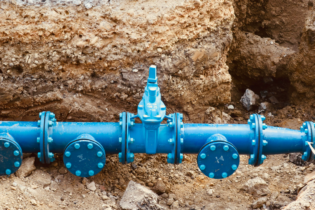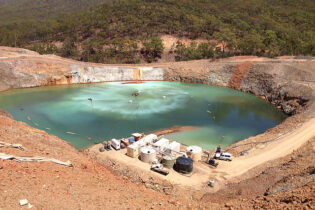With a water shortage predicted by 2020, leaking pipes, ageing infrastructure and poor municipal administration is exacerbating South Africa’s water crisis.
With billions of rand of public funds being wasted annually, Water and Environmental Affairs Minister Edna Molewa has recently revealed that a quarter of the country’s water was being lost due to leaking water systems. Current deficit According to a survey conducted by the Department of Water Affairs that looked at the long-term water requirements for all the municipalities, 30% of towns in South Africa are currently running at a water deficit. The minister also warned that a water shortage was a reality by 2020 if South Africans do not work together to conserve this precious commodity. Advanced metering infrastructure Among the many solutions available to address this problem –such as pipeline refurbishment, anti-theft campaigns and leak detection – advanced metering infrastructure (AMI) holds massive potential in both the industrial and domestic markets. Water engineering specialist WRP Consulting Engineers (WRP) has responded to the leakage issues by launching a remote, web-based, automatic meter reading (AMR) solution for large water users. Water AMR is the technology of automatically collecting consumption, diagnostic, and status data from water meters and transferring that data to a central database for billing, troubleshooting, and analysing. This technology mainly saves utility providers the expense of periodic trips to each physical location to read a meter. Another advantage is that billing can be based on near real-time consumption rather than on estimates based on past or predicted consumption. This timely information coupled with analysis can help both utility providers and customers to better control the use and production of water consumption. AMR technologies include handheld, mobile and network technologies based on telephony platforms (wired and wireless), radio frequency (RF), or powerline transmission. WRP’s solution offers sophisticated machine-to-machine (M2M) technology that effectively allows industrial clients to access daily monitoring and control of their water consumption in terms of flow, pressure and usage. Communications and data management“We have partnered with XLink Communications, which provides us with the M2M platform, product installation and ongoing portal support and maintenance services. These enable us to transmit the data from the reader logger – which is retrofitted to the client’s water meter – through to a base station, and ultimately to XLink’s ‘Insight’, an internet-based data acquisition and display facility,” says Ronnie McKenzie, MD at WRP.
“The resulting product is a unique solution based on our expertise in water conservation and demand management, together with XLink’s proven track record in seamless M2M communication platforms and support services. The solution will tie in with virtually any existing GSM/GPRS logger, although we are working closely with Technolog from the UK, which has developed the Cello range of loggers widely recognised for their reliability and proven five-year power supply.” Technolog’s Cello range is able to transfer recorded data, meter readings and alarm messages to a host computer or enterprise management system and is self-powered for five years. Early warning system Grant McGlashan, executive head of new business development at XLink comments: “This M2M water management solution replaces the need for monthly manual meter readings by providing clients with direct access to graphical reporting of their water consumption, as well as early identification of system, infrastructure or water meter problems. Automated alarm notifications via SMS or e-mail alert the client to system defects, such as leaks or meter reading errors, which can then be addressed immediately.” Roll-out of this M2M solution is expected to play a crucial role in helping the industrial, agricultural, mining and mixed-tenant commercial sectors to improve their water consumption and management. The public sector, which is now under mandate to drive efficiencies in all public buildings, would also benefit from the system. About the WRP/XLink pilot project A pilot phase designed to test the product and the reliability of the equipment was launched several years ago and has delivered highly successful results. Various installations were commissioned throughout the country, including municipalities and large industries. The results are provided to the customer via the internet and can be accessed on any PC, smartphone or tablet device. Typical problems identified include inaccurate or broken water meters, on-site leaks, unexpected pressure variations, and even hidden connections, all of which contribute to water loss in one way or another. The benefits from the system are often underestimated and even a small leak of only 2 m³/h will result in an additional R17 000 each month to the customer’s water bill. Many leaks were identified on the customer’s premises; in one case, the cost of water lost due to a leak was over R6 million over a period of three years. Generally, however, a leakage is much smaller, but can typically cost a medium- to large-size industrial customer between R20 000 and R50 000 per annum. In the case of Distell in Wadeville, Germiston, the system was employed on the compant’s main water meters and immediately indicated a possible leak somewhere on the internal pipework within the warehousing facility. Distell quickly investigated the problem and found a leak of almost 2 m³/h under a concrete slab, which it subsequently repaired. Without this form of ‘real-time’ monitoring, a leakage of this kind is often overlooked and can run for months if not years. As water becomes more expensive and scarce throughout South Africa, the need to implement continuous monitoring and evaluation will increase. The XLink/WRP solution has been specifically designed to assist customers with monitoring water consumption and identifying problems as soon as they occur, thus reducing wastage.







